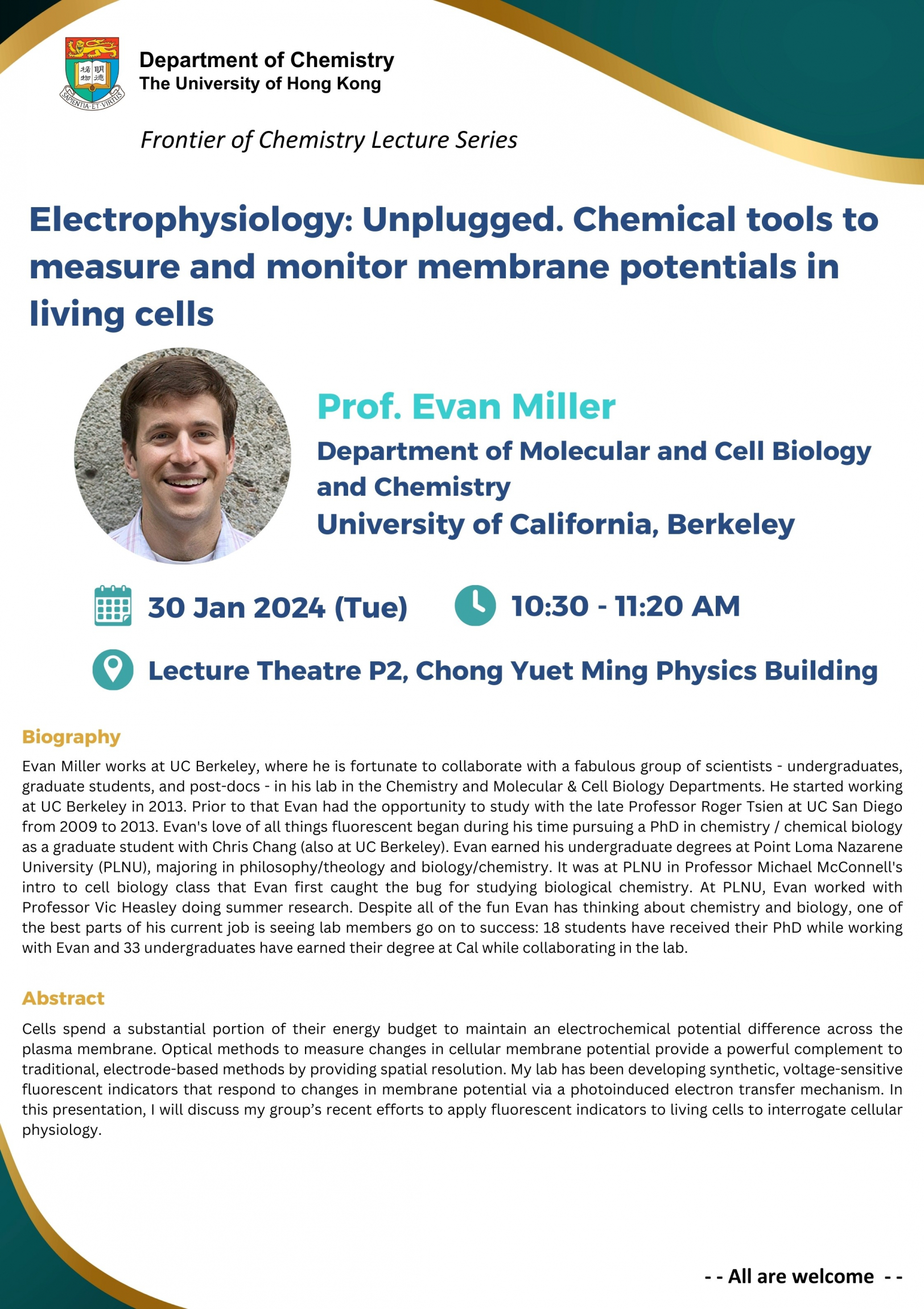| Date | 30 Jan 2024 |
| Time | 10:30 am - 11:20 am (HKT) |
| Venue | Lecture Theatre P2, Chong Yuet Ming Physics Building |
| Speaker | Prof. Evan Miller |
| Institution | Department of Molecular and Cell Biology and Chemistry, University of California, Berkeley |
 Schedule:
Schedule:
Date: 30th January, 2024 (Tuesday)
Time: 10:30 - 11:20 am (HKT)
Venue: Lecture Theatre P2, Chong Yuet Ming Physics Building
Speaker:
Prof. Evan Miller
Department of Molecular and Cell Biology and Chemistry
University of California, Berkeley
Biography:
Evan Miller works at UC Berkeley, where he is fortunate to collaborate with a fabulous group of scientists - undergraduates, graduate students, and post-docs - in his lab in the Chemistry and Molecular & Cell Biology Departments. He started working at UC Berkeley in 2013. Prior to that Evan had the opportunity to study with the late Professor Roger Tsien at UC San Diego from 2009 to 2013. Evan's love of all things fluorescent began during his time pursuing a PhD in chemistry / chemical biology as a graduate student with Chris Chang (also at UC Berkeley). Evan earned his undergraduate degrees at Point Loma Nazarene University (PLNU), majoring in philosophy/theology and biology/chemistry. It was at PLNU in Professor Michael McConnell's intro to cell biology class that Evan first caught the bug for studying biological chemistry. At PLNU, Evan worked with Professor Vic Heasley doing summer research. Despite all of the fun Evan has thinking about chemistry and biology, one of the best parts of his current job is seeing lab members go on to success: 18 students have received their PhD while working with Evan and 33 undergraduates have earned their degree at Cal while collaborating in the lab.
Abstract:
Cells spend a substantial portion of their energy budget to maintain an electrochemical potential difference across the plasma membrane. Optical methods to measure changes in cellular membrane potential provide a powerful complement to traditional, electrode-based methods by providing spatial resolution. My lab has been developing synthetic, voltage-sensitive fluorescent indicators that respond to changes in membrane potential via a photoinduced electron transfer mechanism. In this presentation, I will discuss my group’s recent efforts to apply fluorescent indicators to living cells to interrogate cellular physiology.
- ALL ARE WELCOME -
